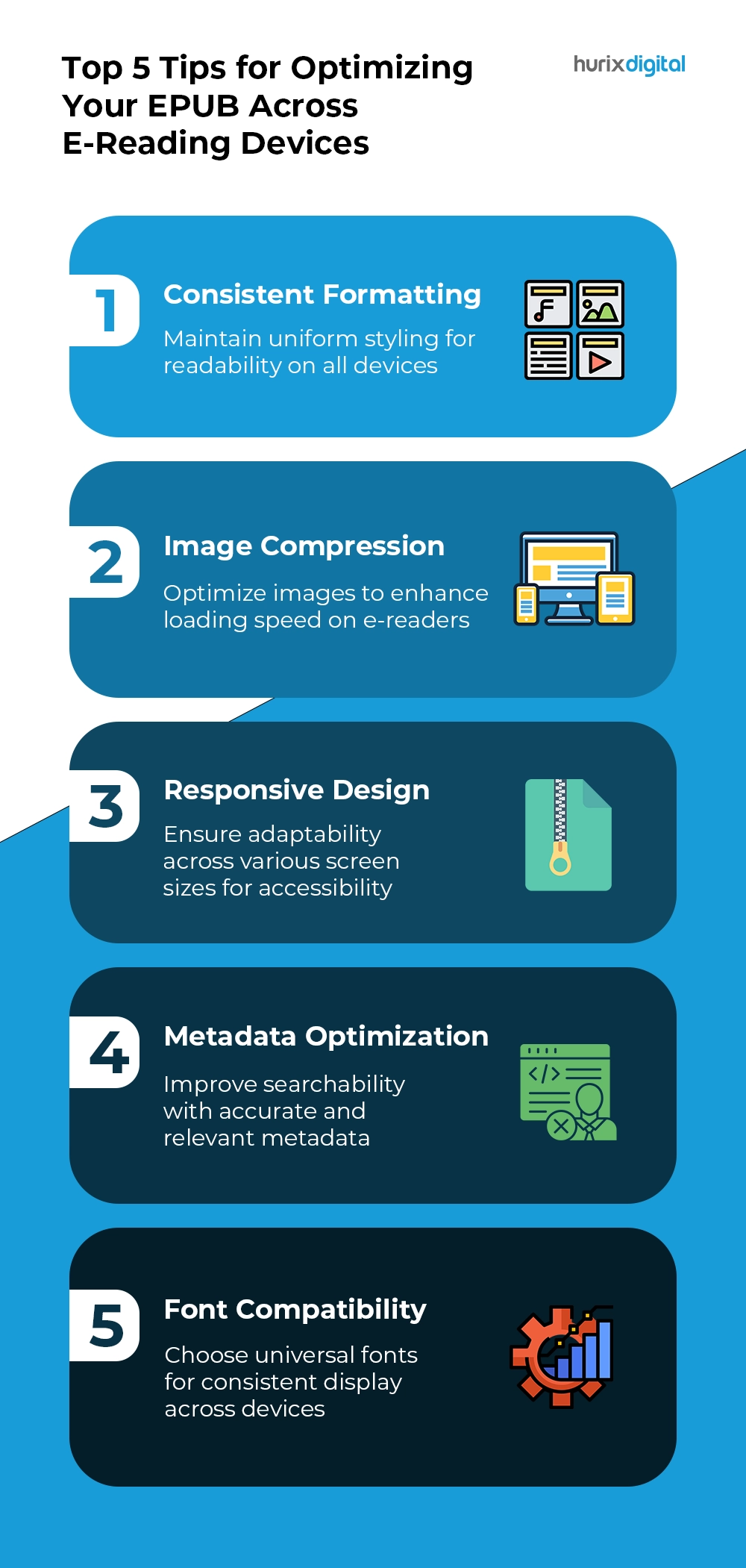Ensuring a seamless reading experience across various devices is essential for digital publishing. An optimized EPUB file enhances readability, improves compatibility, and ensures accessibility for all users. Proper formatting and technical adjustments help maintain content quality and consistency.
By applying the right optimization techniques, authors and publishers can create EPUB files that display correctly across different e-readers without compromising speed or quality.
Unlock the full potential of your EPUB with Hurix Digital. Optimize your content for seamless e-reading across devices. Contact us now to know more!

Why EPUB Optimization Matters
Poorly formatted EPUB files can result in display errors, slow loading times, and readability issues. Optimizing digital books and documents improves:
- Consistency across multiple devices and screen sizes.
- Loading speed by reducing unnecessary file bloat.
- Searchability through proper metadata integration.
- Accessibility for a wider range of readers.
Best Practices for Optimizing EPUB Files
1. Maintain Consistent Formatting
Content should be formatted using proper styles, including headings, paragraphs, and spacing. Avoid excessive use of fonts, colors, and custom styling that may not be supported across all devices.
2. Optimize Images for Faster Loading
Large images can slow down an EPUB file. Compressing images without sacrificing quality ensures a smoother reading experience. Using the appropriate file format, such as JPEG or PNG, helps maintain clarity.
3. Ensure Responsive Design
A well-structured EPUB should adapt to various screen sizes. Reflowable text ensures readability on e-readers, tablets, and smartphones. Fixed layouts should be used only when necessary for design-heavy content.
4. Enhance Metadata for Better Searchability
Adding accurate metadata improves the discoverability of an EPUB file. Including relevant keywords, author information, and a clear book description helps indexing on eBook platforms.
5. Use Compatible Fonts
Not all fonts render correctly across devices. Choosing universally supported fonts ensures a consistent reading experience without formatting issues. Embedded fonts should be used sparingly to avoid increasing file size.
Final Thoughts
Optimizing an EPUB file ensures smooth performance across various reading platforms. By following best practices in formatting, image compression, metadata optimization, and responsive design, publishers can create high-quality digital content that reaches a wider audience.



